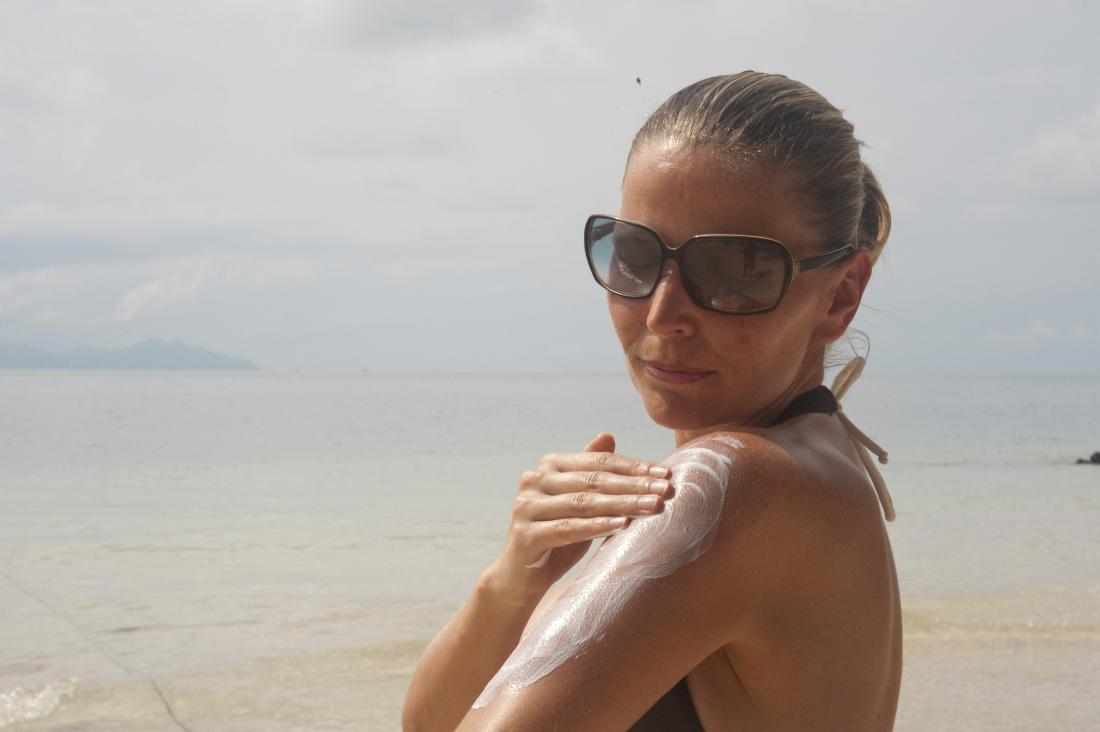
A new study explains that homemade sunscreens may be ineffective and advises that we steer clear of these DIY products.
A quick Google search for the term “homemade sunscreen” will list about 9,750,000 results. Many are recipes for “natural,” “simple,” and “nontoxic” do-it-yourself (DIY) products.
The allure of DIY sunscreen is rooted in multiple factors, such as potentially lower costs and the belief that an all-natural cream made with handpicked ingredients is more healthful than a mass-produced sunscreen with an ingredient list that features chemicals with illegible names.
However, a new study warns that we shouldn’t trust the sunscreen recipes that we find online to yield a product that offers the protection we need against sunburn.
The study comes from a team of researchers from the Center for Injury Research and Policy at the Nationwide Children’s Hospital, in Columbus, OH, and the Brooks College of Health at the University of North Florida, in Jacksonville. Its findings will appear in the journal Health Communication.
“The internet is a great place for families to go to for recipe inspiration and arts and crafts projects, but not necessarily for making their own safety-related things,” warns study co-author Lara McKenzie, Ph.D.
Homemade sunscreen is ‘risky’
Since social media are a top source, worldwide, when it comes to DIY products, the researchers turned their attention to one such website: Pinterest, a social platform that allows users to display moodboard-like digital collections of their interests.
Some data suggest that Pinterest is the fourth most popular social media platform in the United States, where the website had an estimated 77.4 million users in 2018.
In the current study, the researchers looked at how Pinterest users described and rated various recipes for homemade sunscreen. According to the researchers, this is the first ever study to look at the portrayal of DIY sunscreen on Pinterest.
They found that most — 95.2%, to be exact — of the saved posts (called “pins”) regarding DIY sunscreen suggested that the homemade products were effective, and 68.3% of the pins promoted DIY sunscreens that, the researchers say, did not ensure appropriate protection against ultraviolet (UV) radiation.
Moreover, the team noted that a third of the posts featuring recipes for homemade sunscreen claimed specific sun protection factor — rendered on commercial packaging as “SPF” — rankings, of anywhere from SPF 2–50.
However, the researchers warn that such claims can be misleading, since the ingredients featured in those recipes actually offer minimal protection against UV radiation.
Yet many people appear to show keen interest in these recipes pinned on Pinterest, with users saving each such pin, on average, as many as 808 times. One specific DIY sunscreen pin was saved over 21,700 times, the team saw.
In their study paper, the investigators write that “[s]ocial media has become a powerful tool for sharing health information, yet it becomes dangerous when the information being shared isn’t accurate or complete.”
This also applies when people take the information regarding homemade sunscreens for granted. The researchers explain that specialists do not test such products, and for this reason, they may not provide any protection against UV rays at all.
“Homemade sunscreen products are risky because they are not regulated or tested for efficacy like commercial sunscreens. When you make it yourself, you don’t know if it’s safe or effective.”
Lara McKenzie, Ph.D.
The Centers for Disease Control and Prevention (CDC) note that having “a history of sunburns, especially early in life,” can increase the risk of developing skin cancer. Thus, it is important to wear sunscreen that is tested and proven to be effective, from childhood onward, whenever exposed to strong sun.
Currently, the American Academy of Dermatology recommend using sunscreen that offers broad-spectrum protection — that is, protection against both UVA and UVB rays. It should also be SPF 30 or higher and water-resistant.
The same guidelines state that adults should apply about 1 ounce of sunscreen all over their skin. Individuals should reapply the cream once every couple of hours when out in the sun and even more frequently if they go swimming or become sweaty.